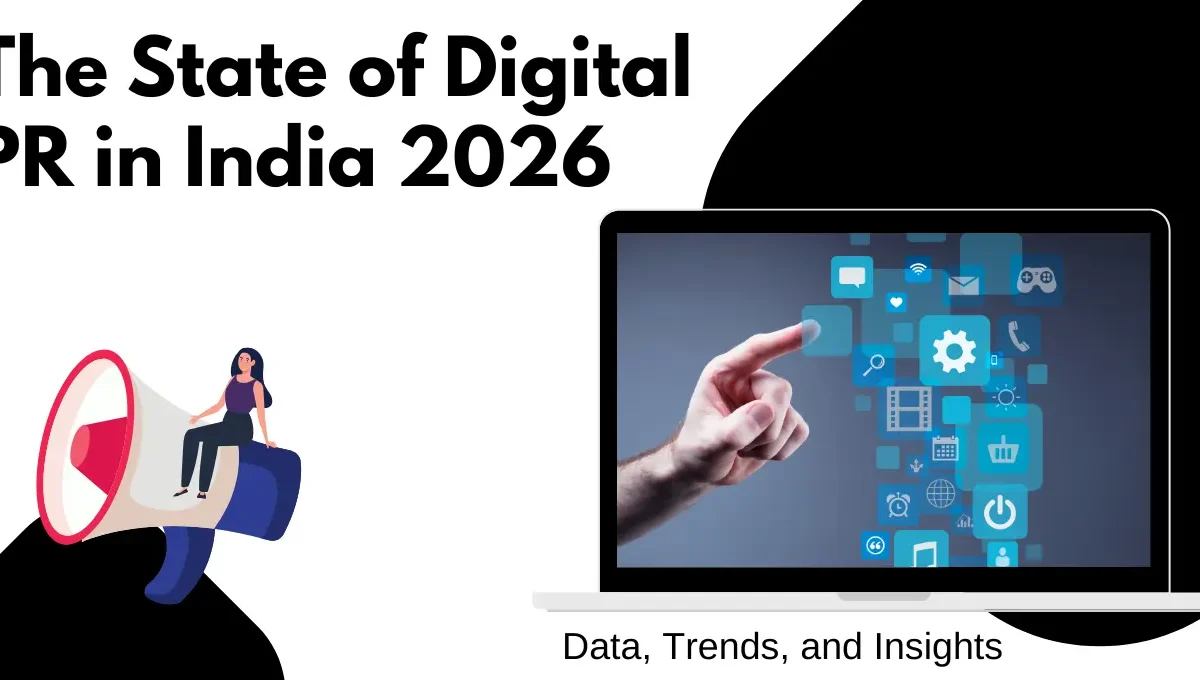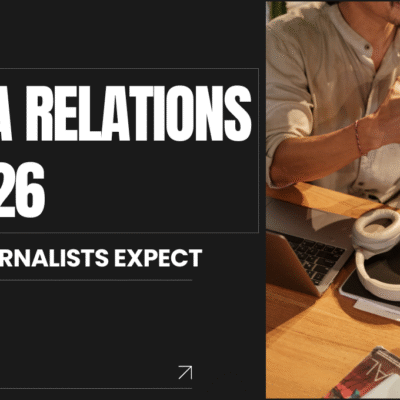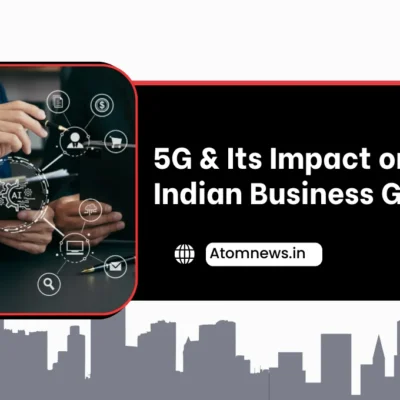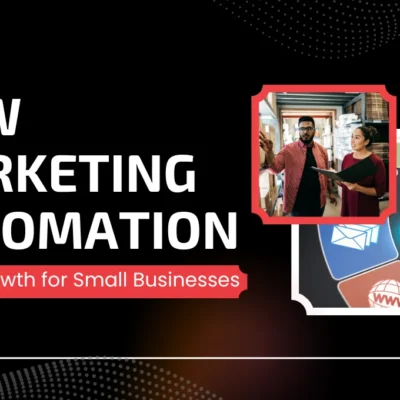In a market as vast and dynamic as India’s, public relations is no longer confined to press releases and media relations. The digital era has transformed PR into a multi-channel, data-driven, community-centric discipline. As we look ahead to 2026, here’s a survey of where digital PR stands, how it’s evolving, and what communicators need to keep in mind.
1. The Market at a Glance: Scale and Growth
- The Indian PR industry reached ~ ₹ 2,500 crore in revenue in FY 2023, representing about 19 % year-on-year growth. (Ipsos)
- Over the past decade the industry has grown at a CAGR of ~12.8 %, outperforming global averages. (prcai.org)
- With internet penetration at ~55.3 % (806 million users) and active social-media user identities at ~491 million in India as of early 2025, the digital opportunity for PR continues to expand. (DataReportal – Global Digital Insights)
Implication: There’s both scale and velocity. Digital PR isn’t a niche add-on anymore—it’s central to how brands engage, influence and build trust.
2. Key Trends Shaping Digital PR in India
a) Data-Driven and Analytics-Led PR
The emphasis on measurement and business outcomes continues to rise. Digital PR campaigns are increasingly judged not just on visibility, but on engagement, conversions, share of voice and sentiment. In India, agencies are adopting analytics tools and reporting frameworks to meet client demands. (atomcomm.in)
b) Influencer & Creator Ecosystem Integration
Traditional media relations remain relevant, but influencer marketing and creator collaborations are now embedded in many PR campaigns. Brands are tapping regional influencers, micro creators and platform-native voices to extend their reach and authenticity. (atomcomm.in)
c) Social Media as a Core PR Channel
Platforms such as Instagram, YouTube, LinkedIn and increasingly regional-language networks are no longer just distribution channels—they are media in their own right. With daily social-media usage rising, brands must master short-form formats, live content, and interactive engagement. (Meltwater)
d) AI, Automation & Tech Enablement
From media monitoring to sentiment analysis, content generation to real-time tracking, AI and automation are becoming foundational tools for PR practitioners in India. Yet these also bring ethical, quality and authenticity challenges. (prcai.org)
e) Hyper-local & Multilingual Storytelling
India’s regional diversity demands communications that resonate in local languages and cultural contexts. More campaigns are being crafted for Tier-2/3 cities, multiple languages and locally relevant narratives. (prcai.org)
f) Purpose, ESG & Authenticity — the New Mandate
Audiences now expect brands to demonstrate purpose, transparency and authenticity. PR now includes reputation management, ESG storytelling and stakeholder communications more than ever before. (prcai.org)
3. Strategic Challenges & What Needs to Change
- Measurement remains elusive. While digital tools abound, tying PR efforts to business outcomes (revenue, trust, advocacy) remains tricky.
- Talent and skills gap. As PR evolves into digital, content, data and tech domains, agencies and in-house teams must upskill.
- Attention economy fatigue. With shrinking attention spans and a crowded content universe, PR must craft sharper, more interactive stories.
- Credibility in a “fake news” era. With AI-driven content and misinformation risks, maintaining authenticity and trust is more critical.
- Integration with marketing ecosystems. PR no longer sits in isolation—it’s integrated with performance marketing, digital, social and earned media. Organizations need aligned workflows, KPIs and budgets.
4. What’s Ahead for 2026 & Beyond
- More budget shift to digital-first PR. Given the growth momentum of digital media, more PR budgets will allocate to social, content-led, analytics-enabled campaigns.
- Greater use of real-time data and listening. From trend spotting to crisis anticipation, PR will rely more on real-time monitoring, AI dashboards and agile responses.
- Rise of creator-led brand ecosystems. Brands will build communities through creator networks, peer-to-peer storytelling and ongoing dialogues instead of one-time campaigns.
- Hybrid-media strategies. Earned media, owned content and social amplification will merge more seamlessly. PR will help brands publish and distribute rather than rely only on third-party coverage.
- Ethics, transparency and trust will be differentiators. As audiences become more skeptical, brands that invest in genuine engagement, clear values and open communications will stand out.
5. Actionable Takeaways for PR Professionals
- Audit your story pipeline. Are your messages aligned to digital channels (video, short-form, social)? Are you tailoring by region/language?
- Prioritise measurement. Define KPIs early (e.g., engagement, sentiment change, share-of-voice) and use analytics to track.
- Build content for channels from day one. Think “creator native” rather than just repurposing press releases.
- Integrate with other functions. Work alongside marketing, social, analytics and digital teams to harness full ecosystem value.
- Focus on audience, not just media. Who is your story for? Where do they consume content? What will make them act?
- Stay ahead of tech-ethics curve. Use AI, tools and automation—but with guardrails on quality, authenticity and compliance.
Closing Thought
India’s digital PR landscape is at an exciting inflection point. The market is large and growing, the tools are more powerful than ever, and audiences are more demanding of relevance and authenticity. For brands and PR professionals ready to evolve their strategy, 2026 offers not just growth—but the chance to lead the narrative.





